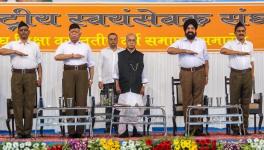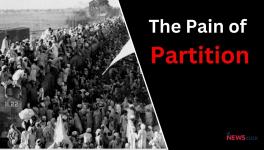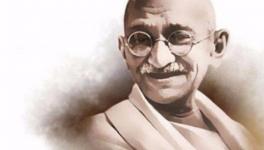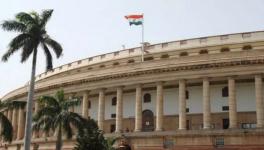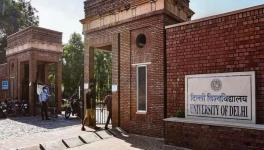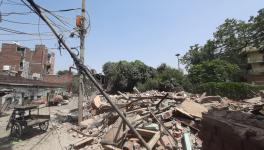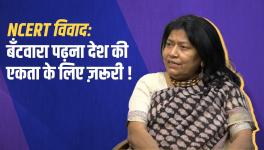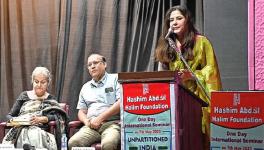Beyond Remembrance: Examining Muslim Lives in Pre-Partition East Punjab
Image Courtesy: Wikimedia Commons
No violence occurs without a perpetrator. However, the tales we tell ourselves about incidences of mass violence—like the Partition—mostly focus on the victims of violence. Perhaps the asymmetry between the memories of victims and those who made them into victims is essential to maintain our sanity. It is easier to live with the memory of suffering than hatred, anger, bloodlust and delusions. Besides, the shared memory of victims allows for a unified sense of humanity.
On this note, on 16 August, the Akal Takht, the highest seat of temporal authority over the Khalsa, held a prayer for all Punjabi victims of Partition violence, irrespective of religion.
The symbolic significance of this ceremony at the holiest Sikh shrine cannot be exaggerated. The Sikhs and Muslims of Punjab charge each other with some of the gravest accusations of planned violence in 1947. Gurucharan Singh Talib’s book, Muslim League Attack on Sikhs and Hindus in the Punjab 1947, claims that the League planned to expel the Sikhs and Hindus from areas it sought to include in Pakistan. On the other hand, the government of Pakistan released two reports in 1948, Note on The Sikh Plan and The Sikhs in Action. As their names suggest, these documents allege plans formulated by Sikhs to remove the Muslim minority from East Punjab forcibly—that part of Punjab province which joined independent India in 1947.
Beyond Remembrance
While shared remembrances of those who died during the Partition can help us transcend its horrors, they should not make us oblivious to other means of dealing with it. First, we must account for the targeted violence against religious minorities in Indian and Pakistani Punjab. How do Punjabis on both sides come to terms with their community executing ethnic cleansing in areas they dominated numerically or otherwise controlled?
There is also the question of the lives minorities lived before they were ethnically cleansed. Seventy-five years later, how can we take note of these lives? For here, too, there is an asymmetry. The lives of refugees after Partition, their struggles and successes, have entered the discourse of their communities, but there is a near-conspiracy of silence in regions they were forced to leave. So, there is little remembrance of Hindus and Sikhs in the public discourse in West Punjab in today’s Pakistan. Similarly, the regions of India where the Muslims were forced to migrate to Pakistan from have little memory of their pre-Partition neighbours.
The so-called minorities in pre-Partition Punjab were nearly half the people in many districts. Their erasure from the recent history of these regions is not only amnesia but a wilful rewriting of the past. Can the Hindus and Sikhs living in East Punjab adopt the life and history of the Muslims forced out from there as part of their heritage? Or can the residents of West Punjab in Pakistan rise to the same challenge today? As a first step, we can gather some facts about the Muslims in pre-Partition East Punjab.
Muslims in East Punjab: Now and Then
Images 1 & 2: Marhee of Muslim Pir in Ambala, 2022. Now shared by local Shivbhakts and Hindu clan gods.
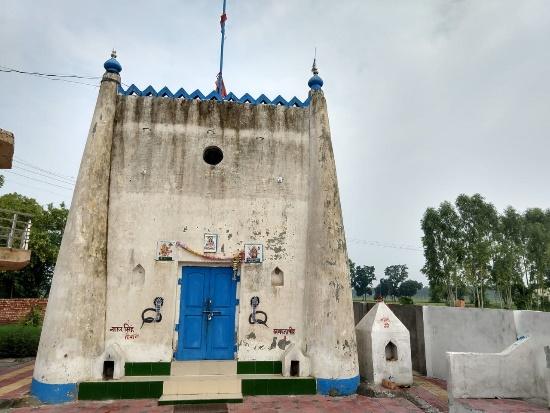
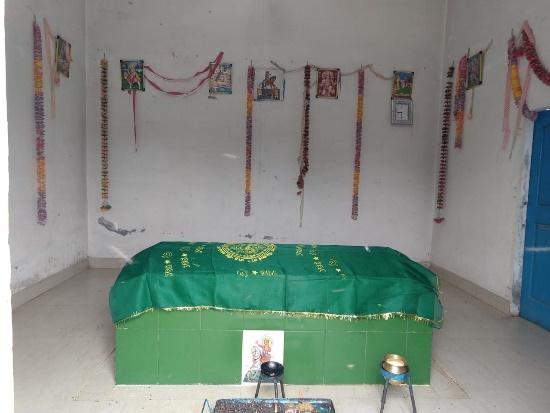
(Photographs by author.)
East Punjab comprises the states of Punjab, Haryana and Himachal Pradesh. The percentage of Muslims is at present about 2% in Punjab, 7% in Haryana and 2% in Himachal Pradesh. Muslims in significant numbers are present only in two areas now, the Mewat region of southern Haryana, where the Meo Muslim community lives and parts of the Malerkotla district of Southwest Punjab’s Malwa region.
The demographic landscape of East Punjab was markedly different in the 1941 Census. Table 1 provides the percentages of the three major communities in districts of the region at the time.
Table 1: Population of three main religious communities in East Punjab (1941, per cent)
* Ad-Dharmis did not claim to be Hindus in the 1941 Census and were listed separately.
** Pre-1947 Gurdaspur district included Gurdaspur, Batala, Pathankot and Shakargarh tehsils. After Radcliffe award made Ravi river the international boundary, Shakargarh (25% of the district’s population) went to Pakistan.
The percentage of Muslims was relatively less in districts which formed Haryana state, but here, too, they constituted around a third of the population. The major concentration of Muslim people was in the plains districts of Amritsar and Jalandhar [earlier, Jullundur], sub-Himalayan Gurdaspur, and Ferozepur, a drier district. Muslims were the largest religious community in all these districts before Partition. The princely states had a good admixture of both communities too. Kapurthala, a state under the Sikh rule, had a 57% Muslim population, while the Hindus were 82% of the subjects in Pataudi, a state ruled by a Muslim. West Punjab, which became part of Pakistan, had a similar mixed population.
Both Punjabs were largely cleared of religious minorities in 1947. Pakistani-origin Swedish political scientist Ishtiaq Ahmed has, in his book, The Punjab Bloodied, Partitioned and Cleansed, explained the political context of the Partition and provided a detailed account of the violence through intensive research into contemporary official and media reports. The book reveals the experiential aspect of Partition violence through interviews with a large number of survivors in both Punjabs.
Life before Partition
Like all religious communities, the East Punjab Muslims were diverse and divided along class lines, self-imagined ethnic backgrounds, and even caste. A tiny fraction was rich; feudal landlords, affluent traders of Amritsar, senior government officials, and professionals such as doctors and lawyers. Many future members of the Pakistani ruling establishment were progenies of this segment—Liaquat Ali Khan, the first prime minister of Pakistan, traced his roots to a landed family of the Karnal district in Haryana (after 1947, in Indian Punjab). The future president Zia-ul-Haq was born in Jalandhar, Indian Punjab, and another prime minister Nawaz Sharif’s family had migrated from rural Amritsar, also in Indian Punjab.
The overwhelming majority of Muslims formed the medium to small peasantry. Malcolm Darling, the registrar of cooperatives in Punjab in the 1920s, whose book, The Punjab Peasant in Prosperity and Debt, is still perhaps the most insightful account of the economics of agriculture in Punjab at the time.,reserves special praise for the Arains of Ludhiana and Jalandhar. He commends their “ant-like industry” and intensive market gardening, which “made Nakodar a garden”.
In class and social terms, the lowest rung of Muslims consisted of converts from the erstwhile artisan castes. The Gujar and Dogar pastoral communities in the riverine areas along the Sutlej and Beas were equally poor.
On average, the Muslims in Punjab were the poorest and least literate of the three largest communities of the region. Their literacy rate in the 30-50 age category was around 8%, nearly half the provincial average of 14%. Their percentage of the urban population was marginally lower than the state average. The region-wise disaggregated data gives a different picture. In pre-Partition Punjab, the percentage of Muslims was higher in the plains, where the largest cities of Lahore, Amritsar, Multan, Jalandhar, and Ludhiana are located. It was even higher than the Hindus, who constituted the primary trading communities of the province. This indicates Muslims were the largest working class in the urban centres of undivided Punjab. In the cities of East Punjab, their share in the population was 47% in Amritsar and 59% in Jalandhar city and cantonment.
1941 Punjab: Region-wise urban population share of three main communities
Shared Strands in Plural Society
Given the intensity of inter-community violence in 1947, it is surprising—but very significant—how much the Hindus, Sikhs and Muslims of East Punjab had in common. The Punjabi language, obviously, was common to the entire province, except areas corresponding to today’s Haryana and Himachal Pradesh. The dialects, intonations and inflections of the spoken language varied locally, but all communities in an area had a similar way of speaking. All communities shared written secular literature. For example, all read and sang Waris Shah’s Heer-Ranjha. The main characters were Muslims, but the narrative depicted the common culture all communities could relate to. The first version of the Heer-Ranjha legend was written by Damodar Das, a Hindu from Jhang.
Another common feature that most communities shared was the ethnic identities of Jat, Rajput and Gujar. Religious differentiation was a later layer, lying above a pre-existing sense of common lineage. Hence, clan and caste names such as Cheema, Gill, Khattar, Tiwana, Sial, Virk, Khurana, Chauhan, Bhati, Bajwa etc., easily crossed religious lines. Barring explicitly religious rituals, quotidian practices related to kinship, marriage, and mourning were similar in the major sections across religious identities.
Organisations and parties that opposed politics based on religious identities—and hence the demand for Pakistan—were another important current. In the 1937 Punjab Provincial Assembly election, the Unionist Party won by a majority. The party also won 75 of the 84 seats reserved for Muslims. It represented the interests of landed Muslims and Hindus, was considered loyal to the British, and opposed the Indian National Congress’ agitations for independence. But it also opposed the division of Punjab. Its tallest Hindu leader was Sir Chhotu Ram of Rohtak district in Haryana. The Majlis-e-Ahrar, an anti-colonial ulema-based organisation, won four other seats in the provincial election. And it, too, opposed the division of Punjab along religious lines. The pro-division Muslim League won only two seats.
The tables turned in the 1946 election, held after it was clear the British would leave India soon. When the question of nation-formation after the departure of the British became central, a party loyal to the British drew little attention. The Punjabi Muslim electorate moved decisively towards the Pakistan programme of the Muslim League, giving it 71 of the 84 reserved seats.
An important strand in the anti-Partition politics of Punjab was the Muslim leadership of the Congress. Ahmed lists three Muslim presidents of the Punjab Congress before independence, including the most famous, Dr Saifuddin Kitchlew, from a prosperous Kashmiri trading family of Amritsar, a well-known barrister and educationist. He moved to Left politics during his student days at Cambridge and, with Dr Satyapal, became a vital member of the Congress’s provincial left wing. The two doctors—Kitchlew and Satyapal—were heroes of the anti-Rowlatt Act agitation in Amritsar in 1919. Their arrest was among the causes that precipitated the Baisakhi meeting at Jallianwala Bagh in the city. Dr Kitchlew was also chairman of the reception committee of the Lahore Session in 1930, in which the Congress passed the resolution for complete independence.
Muslim representation in the pre-independence Punjab Congress is an almost forgotten chapter of the sub-continent’s history. Ahmad registers it in these words: “To my great surprise, when I spoke to elderly Punjabis all over the Pakistani Punjab, I learnt that several anti-colonial Muslims were active in the Congress in many districts such as Jhelum, Gujrat [Gujarat], Ludhiana, Amritsar, Multan, Gujranwala and Jullundur.”
In terms of economic policy, Congress represented the interests of Hindu trading castes who formed its core base in Punjab. In 1936, it was cool to the law against rural moneylending brought by Sir Chhotu Ram in favour of the peasantry. In the Punjabi-speaking parts of the province, the beneficiaries would primarily be Sikh and Muslim peasants.
Despite its narrow pro-Hindu trading caste economic programme, communal unity was a core operating philosophy of the Congress in Punjab. The starkness of Partition violence shattered this. Though shaken, the Hindu and Sikh leaders of the Punjab Congress retained their ideological moorings in post-independence Nehruvian India. But their Muslim comrades suffered an existential blow. As East Punjab was “cleansed” of Muslims, many, including Dr Kitchlew, were forced to take refuge in Pakistan. Ideologically, like the protagonist of Manto’s Toba Tek Singh, they entered a no man’s land: Pakistan, the antithesis of their cherished beliefs and efforts for unity. Their home, where with blood, sweat and tears they had tended their political ground—even Amritsar city—no longer had a place for Dr Kitchlew.
As Partition hysteria subsided and the anti-democratic character of the Pakistani establishment became more evident, some Punjabi migrants—Leftist poet Sahir Ludhianvi and Dr Kitchlew included—returned to India. However, almost nobody returned to East Punjab. Something had changed forever.
In The Discovery of India, first prime minister Jawaharlal Nehru compares Indian history with a palimpsest in which nothing is erased but where all earlier writings exist under the newest. The Partition and its aftermath in both Indian and Pakistani Punjab appear to be consciously disowning this implicit diversity. The life and times of religious minorities on both sides are being erased from popular versions of the recent past. The current political dispensation in India is building its fortune on another bout of hatred and violence and an even deeper and wider erasure of minorities from history. Can we still salvage the core strength of the sub-continent? That is the challenge, not just before Punjabis but all citizens of India.
The author teaches physics at St Stephen’s College, University of Delhi. The views are personal.
Get the latest reports & analysis with people's perspective on Protests, movements & deep analytical videos, discussions of the current affairs in your Telegram app. Subscribe to NewsClick's Telegram channel & get Real-Time updates on stories, as they get published on our website.










